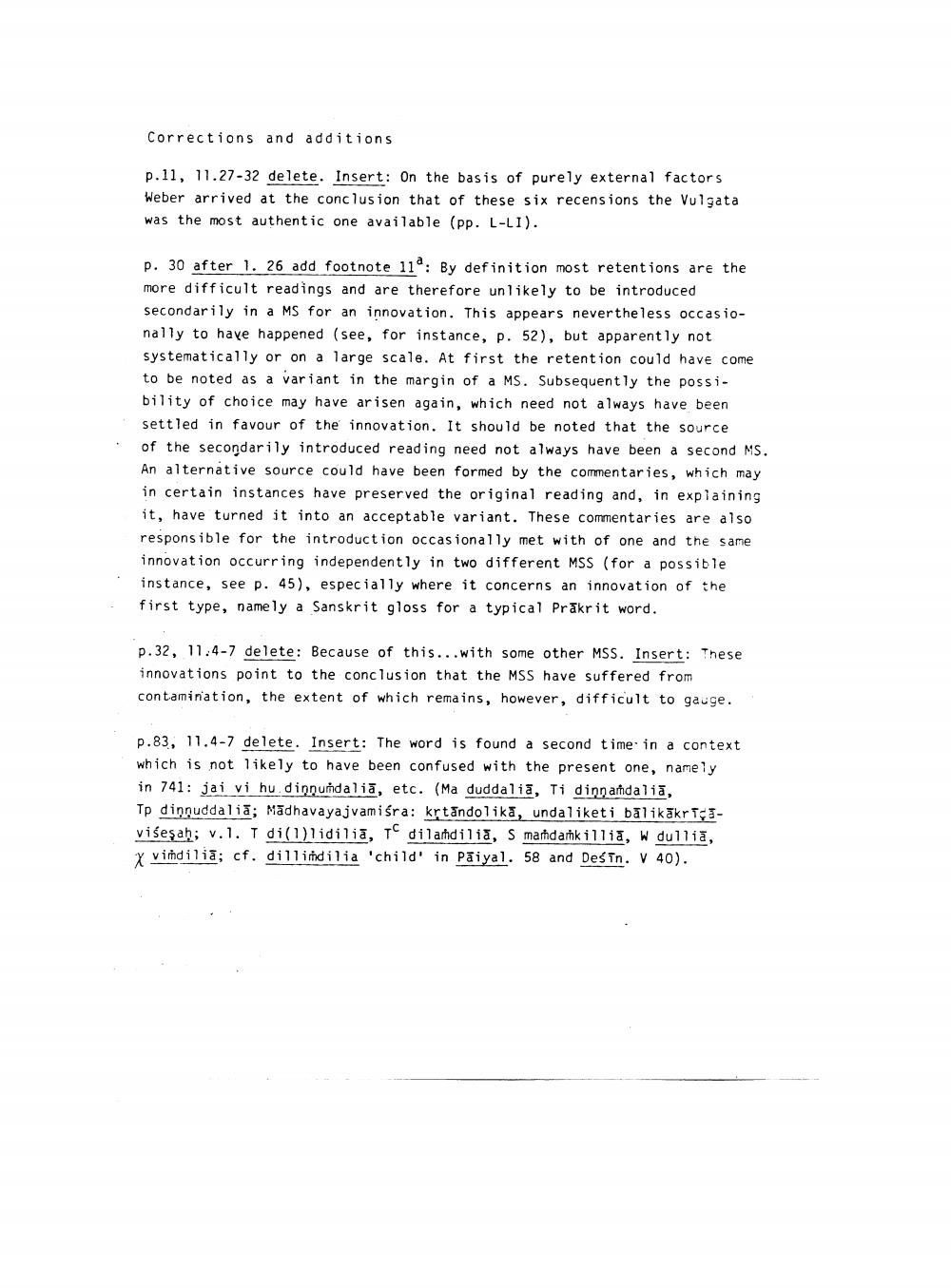________________
Corrections and additions
p.11, 11.27-32 delete. Insert: On the basis of purely external factors Weber arrived at the conclusion that of these six recensions the Vulgata was the most authentic one available (pp. L-LI).
p. 30 after 1. 26 add footnote 119: By definition most retentions are the more difficult readings and are therefore unlikely to be introduced secondarily in a MS for an innovation. This appears nevertheless occasionally to have happened (see, for instance, p. 52), but apparently not systematically or on a large scale. At first the retention could have come to be noted as a variant in the margin of a MS. Subsequently the possibility of choice may have arisen again, which need not always have been settled in favour of the innovation. It should be noted that the source of the secondarily introduced reading need not always have been a second MS. An alternative source could have been formed by the commentaries, which may in certain instances have preserved the original reading and, in explaining it, have turned it into an acceptable variant. These commentaries are also responsible for the introduction occasionally met with of one and the same innovation occurring independently in two different MSS (for a possible instance, see p. 45), especially where it concerns an innovation of the first type, namely a Sanskrit gloss for a typical Prākrit word.
p.32, 11.4-7 delete: Because of this...with some other MSS. Insert: These innovations point to the conclusion that the MSS have suffered from contamination, the extent of which remains, however, difficult to gauge.
p.83, 11.4-7 delete. Insert: The word is found a second time in a context which is not likely to have been confused with the present one, namely in 741: jai vi hu dinnundalia, etc. (Ma duddalia, Ti dinnandalia, Tp diņnuddalia; Madhavayajvamiśra: krtandolika, undaliketi bálikākrTÇIvišeşah; v.1. Tdi(1) lidilia, TC dilandilia, s mandamkillia, w dullia, x vimdiliā; cf. dillindilia 'child' in Pāiyal. 58 and Desin. V 40).




